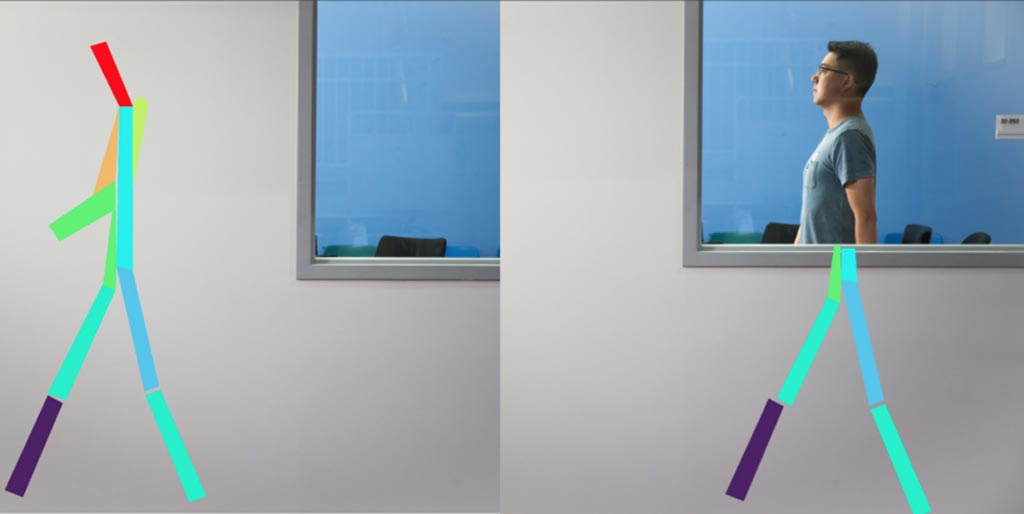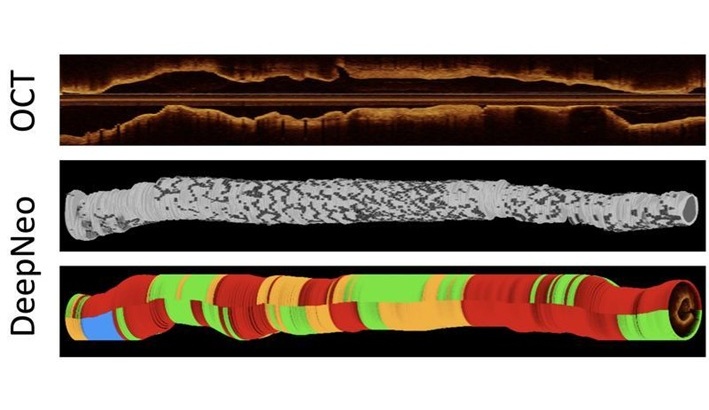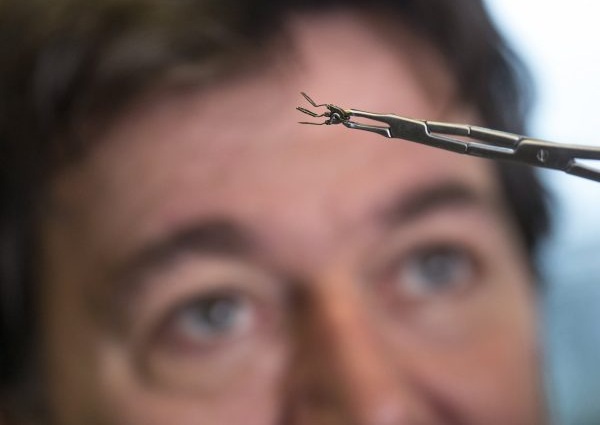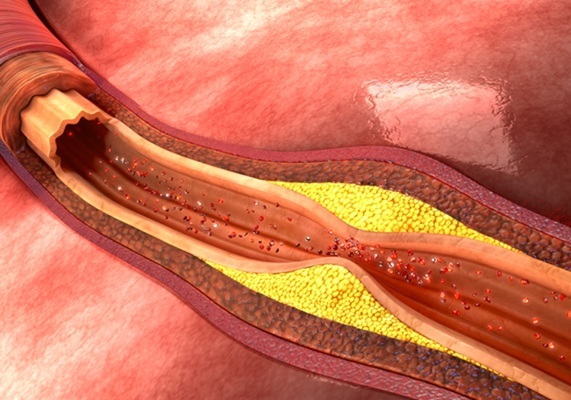AI Study Sees through Walls and Occlusions
|
By HospiMedica International staff writers Posted on 28 Jun 2018 |

Image: A new study shows how artificial intelligence can identify human motion and posture, even through walls (Photo courtesy of CSAIL).
A new study describes how artificial intelligence (AI) can be used to analyze radio signals bouncing off people's bodies so as to study posture and movement, even through walls.
The Massachusetts Institute of Technology (MIT, Cambridge, MA, USA) RF-Pose project is based on a deep neural network approach that parses wireless signals in the WiFi frequencies in order to estimate human poses and postures. One of the stumbling blocks in the process is that teaching AI networks to identify visual patterns relies on human annotation; but since radio signals cannot be annotated, the researchers used a state-of-the-art vision model to provide cross-modal supervision.
This involved collecting thousands of examples of both wireless device data and matched photographic images of people doing activities like walking, talking, sitting, opening doors, and waiting for elevators. They then used the images to extract stick figures, which they showed to the AI neural network along with the corresponding radio signal. The combined data enabled the AI system to learn the association between the radio signal and the stick figures of the people in a given scene. Once trained, the network used only the wireless signal for pose estimation.
The results showed that when tested on visible scenes, the radio-based system is almost as accurate as the vision-based system used to train it. But unlike vision-based pose estimation, the radio-based system can also estimate two-dimensional (2D) poses through walls, despite never being trained on such scenarios. The researchers suggest the system could monitor patients with Parkinson's disease, multiple sclerosis (MS), and other issues, as well as provide an added security for seniors at home by monitoring falls, injuries, and changes in activity patterns. The study was presented at the annual conference on Computer Vision and Pattern Recognition (CVPR), held during June 2018 in Salt Lake City (UT, USA).
“Just like how cellphones and Wi-Fi routers have become essential parts of today's households, I believe that wireless technologies like these will help power the homes of the future,” said senior author Professor Dina Katabi, PhD, of the MIT Computer Science and Artificial Intelligence Laboratory (CSAIL). “We've seen that monitoring patients' walking speed and ability to do basic activities on their own gives healthcare providers a window into their lives that they didn't have before, which could be meaningful for a whole range of diseases.”
Related Links:
Massachusetts Institute of Technology
The Massachusetts Institute of Technology (MIT, Cambridge, MA, USA) RF-Pose project is based on a deep neural network approach that parses wireless signals in the WiFi frequencies in order to estimate human poses and postures. One of the stumbling blocks in the process is that teaching AI networks to identify visual patterns relies on human annotation; but since radio signals cannot be annotated, the researchers used a state-of-the-art vision model to provide cross-modal supervision.
This involved collecting thousands of examples of both wireless device data and matched photographic images of people doing activities like walking, talking, sitting, opening doors, and waiting for elevators. They then used the images to extract stick figures, which they showed to the AI neural network along with the corresponding radio signal. The combined data enabled the AI system to learn the association between the radio signal and the stick figures of the people in a given scene. Once trained, the network used only the wireless signal for pose estimation.
The results showed that when tested on visible scenes, the radio-based system is almost as accurate as the vision-based system used to train it. But unlike vision-based pose estimation, the radio-based system can also estimate two-dimensional (2D) poses through walls, despite never being trained on such scenarios. The researchers suggest the system could monitor patients with Parkinson's disease, multiple sclerosis (MS), and other issues, as well as provide an added security for seniors at home by monitoring falls, injuries, and changes in activity patterns. The study was presented at the annual conference on Computer Vision and Pattern Recognition (CVPR), held during June 2018 in Salt Lake City (UT, USA).
“Just like how cellphones and Wi-Fi routers have become essential parts of today's households, I believe that wireless technologies like these will help power the homes of the future,” said senior author Professor Dina Katabi, PhD, of the MIT Computer Science and Artificial Intelligence Laboratory (CSAIL). “We've seen that monitoring patients' walking speed and ability to do basic activities on their own gives healthcare providers a window into their lives that they didn't have before, which could be meaningful for a whole range of diseases.”
Related Links:
Massachusetts Institute of Technology
Latest AI News
Channels
Critical Care
view channel
AI Model Analyzes Patient Data to Diagnose Multiple Sclerosis With 90% Accuracy
Multiple sclerosis (MS) is a chronic inflammatory condition affecting the central nervous system. Most patients initially experience the relapsing-remitting form (RRMS), characterized by periods of symptom... Read more
Magnetically Navigable Microparticles Enable Targeted Drug Delivery
Abdominal aortic aneurysms (AAA) can be life-threatening if not treated and result in nearly 10,000 deaths annually. Researchers working to improve treatments for AAA could now make it possible for doctors... Read more
AI-Powered Algorithm Automates Analysis of Coronary Stents After Implantation
Every year, over three million people globally receive stents to open blocked blood vessels caused by heart disease. However, monitoring the healing process after stent implantation remains a significant challenge.... Read moreSurgical Techniques
view channel
DNA Origami Improves Imaging of Dense Pancreatic Tissue for Cancer Detection and Treatment
One of the challenges of fighting pancreatic cancer is finding ways to penetrate the organ’s dense tissue to define the margins between malignant and normal tissue. Now, a new study uses DNA origami structures... Read more
Pioneering Sutureless Coronary Bypass Technology to Eliminate Open-Chest Procedures
In patients with coronary artery disease, certain blood vessels may be narrowed or blocked, requiring a stent or a bypass (also known as diversion) to restore blood flow to the heart. Bypass surgeries... Read more
Intravascular Imaging for Guiding Stent Implantation Ensures Safer Stenting Procedures
Patients diagnosed with coronary artery disease, which is caused by plaque accumulation within the arteries leading to chest pain, shortness of breath, and potential heart attacks, frequently undergo percutaneous... Read more
World's First AI Surgical Guidance Platform Allows Surgeons to Measure Success in Real-Time
Surgeons have always faced challenges in measuring their progress toward surgical goals during procedures. Traditionally, obtaining measurements required stepping out of the sterile environment to perform... Read morePatient Care
view channel
Portable Biosensor Platform to Reduce Hospital-Acquired Infections
Approximately 4 million patients in the European Union acquire healthcare-associated infections (HAIs) or nosocomial infections each year, with around 37,000 deaths directly resulting from these infections,... Read moreFirst-Of-Its-Kind Portable Germicidal Light Technology Disinfects High-Touch Clinical Surfaces in Seconds
Reducing healthcare-acquired infections (HAIs) remains a pressing issue within global healthcare systems. In the United States alone, 1.7 million patients contract HAIs annually, leading to approximately... Read more
Surgical Capacity Optimization Solution Helps Hospitals Boost OR Utilization
An innovative solution has the capability to transform surgical capacity utilization by targeting the root cause of surgical block time inefficiencies. Fujitsu Limited’s (Tokyo, Japan) Surgical Capacity... Read more
Game-Changing Innovation in Surgical Instrument Sterilization Significantly Improves OR Throughput
A groundbreaking innovation enables hospitals to significantly improve instrument processing time and throughput in operating rooms (ORs) and sterile processing departments. Turbett Surgical, Inc.... Read moreHealth IT
view channel
Printable Molecule-Selective Nanoparticles Enable Mass Production of Wearable Biosensors
The future of medicine is likely to focus on the personalization of healthcare—understanding exactly what an individual requires and delivering the appropriate combination of nutrients, metabolites, and... Read more
Smartwatches Could Detect Congestive Heart Failure
Diagnosing congestive heart failure (CHF) typically requires expensive and time-consuming imaging techniques like echocardiography, also known as cardiac ultrasound. Previously, detecting CHF by analyzing... Read moreBusiness
view channel
Expanded Collaboration to Transform OR Technology Through AI and Automation
The expansion of an existing collaboration between three leading companies aims to develop artificial intelligence (AI)-driven solutions for smart operating rooms with sophisticated monitoring and automation.... Read more
















